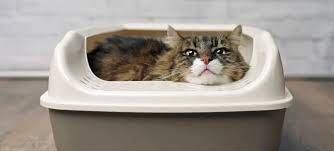Do you find yourself searching for advise around Why you should never flush dog poop down the toilet?

When it concerns disposing of waste, particularly animal waste, many people commonly turn to the hassle-free option of flushing it down the bathroom. However, this relatively easy service can have serious repercussions for the environment and public health. In this short article, we'll discover why flushing animal waste down the commode is a bad concept and provide alternate approaches for proper disposal.
Introduction
Correct waste disposal is critical for maintaining ecological sustainability and public health. While it might appear harmless to flush animal waste down the toilet, it can cause numerous concerns, both for the environment and human wellness.
Threats of flushing animal waste
Ecological effect
Flushing pet waste presents damaging microorganisms and microorganisms right into waterways, which can adversely affect marine environments. These pathogens can pollute water sources and damage aquatic life, disrupting fragile ecological communities.
Public health issues
Animal waste contains dangerous bacteria such as E. coli and Salmonella, which can present major health and wellness risks to people. Purging pet waste down the bathroom can contaminate water products, resulting in the spread of conditions and infections.
Alternatives to flushing
As opposed to purging pet waste down the commode, there are several alternative disposal techniques that are much more environmentally friendly and hygienic.
Composting
Composting animal waste is a green means to dispose of it. By composting, raw material is broken down right into nutrient-rich soil, which can be used to feed yards and plants.
Garbage dump disposal
Throwing away animal waste in a land fill is another alternative. While not as environmentally friendly as composting, it is a safer choice to flushing, as it avoids the contamination of water resources.
Animal garbage disposal systems
There are specific pet dog waste disposal systems readily available that securely and hygienically deal with pet waste. These systems commonly utilize enzymes to break down waste and eliminate odors.
Actions to correct pet waste disposal
To make certain proper disposal of animal waste, comply with these actions:
Scooping and landing waste
Routinely scoop and bag pet waste utilizing eco-friendly bags. This prevents waste from contaminating the environment.
Using designated waste bins
Dispose of bagged pet waste in marked waste containers, such as garden compost bins or landfill bins. Prevent flushing it down the bathroom at all prices.
Cleaning up litter boxes and pet dog locations routinely
Regularly tidy litter boxes and pet dog areas to prevent the build-up of waste and germs. Usage pet-safe cleaning items to keep hygiene.
Advantages of appropriate disposal methods
Adopting appropriate disposal approaches for pet waste uses a number of benefits:
Reduced environmental pollution
Proper disposal methods lower the risk of environmental pollution, protecting rivers and ecosystems from contamination
Lessened threat of water contamination.
By avoiding flushing animal waste down the bathroom, the danger of water contamination is significantly decreased, securing public health.
Boosted hygiene and health
Correct disposal approaches advertise far better hygiene and health, producing a much safer atmosphere for both human beings and pets.
Final thought
To conclude, flushing pet waste down the commode is hazardous to the setting and public health. By taking on alternate disposal methods and adhering to proper waste monitoring methods, here we can minimize the adverse impact of pet waste and contribute to a cleaner, much healthier planet.
What To Do With Dog Poo – The Do's And Don'ts Of Disposing Of Faeces
Dog poo bins
Some councils provide dedicated dog waste bins in popular dog-walking areas that can take dog poo that has been bagged but you can legally dispose of dog waste in any public litter bin, as long as it is securely bagged. This also applies to your wheelie bin at home.
Do not flush
Water companies do not recommend flushing dog faeces down the toilet because certain parasites can survive the water processing treatment and are potentially harmful to humans. You should also never consider flushing dog poo that has been bagged down the toilet as the bags will not break down and instead create severe blockages in the sewage system.
In the woods
The Forestry Commission promotes a ‘stick and flick’ method for dealing with waste in the woods. This means finding a stick and using it to flick any poo from off the path so that it is out of the way of other walkers. You could also bury it as long as it is not in an area where there might be livestock.
Livestock
Parasites found in dog poo can be transmitted to livestock if they inadvertently eat infected faeces that has been left on grazing land. This could result in the death of sheep or abortion in cattle so you should always make sure you pick up your dog’s waste in fields where livestock could be present.

Regularly tidy litter boxes and pet dog areas to prevent the build-up of waste and germs. Usage pet-safe cleaning items to keep hygiene.
Advantages of appropriate disposal methods
Adopting appropriate disposal approaches for pet waste uses a number of benefits:
Reduced environmental pollution
Proper disposal methods lower the risk of environmental pollution, protecting rivers and ecosystems from contamination
Lessened threat of water contamination.
By avoiding flushing animal waste down the bathroom, the danger of water contamination is significantly decreased, securing public health.
Boosted hygiene and health
Correct disposal approaches advertise far better hygiene and health, producing a much safer atmosphere for both human beings and pets.
Final thought
To conclude, flushing pet waste down the commode is hazardous to the setting and public health. By taking on alternate disposal methods and adhering to proper waste monitoring methods, here we can minimize the adverse impact of pet waste and contribute to a cleaner, much healthier planet.
What To Do With Dog Poo – The Do's And Don'ts Of Disposing Of Faeces
Dog poo bins
Some councils provide dedicated dog waste bins in popular dog-walking areas that can take dog poo that has been bagged but you can legally dispose of dog waste in any public litter bin, as long as it is securely bagged. This also applies to your wheelie bin at home.
Do not flush
Water companies do not recommend flushing dog faeces down the toilet because certain parasites can survive the water processing treatment and are potentially harmful to humans. You should also never consider flushing dog poo that has been bagged down the toilet as the bags will not break down and instead create severe blockages in the sewage system.
In the woods
The Forestry Commission promotes a ‘stick and flick’ method for dealing with waste in the woods. This means finding a stick and using it to flick any poo from off the path so that it is out of the way of other walkers. You could also bury it as long as it is not in an area where there might be livestock.
Livestock
Parasites found in dog poo can be transmitted to livestock if they inadvertently eat infected faeces that has been left on grazing land. This could result in the death of sheep or abortion in cattle so you should always make sure you pick up your dog’s waste in fields where livestock could be present.
I discovered that review on Why you should never flush dog poop down the toilet while exploring the web. So long as you liked our blog posting plz don't forget to pass it around. I praise you for being here. Revisit us soon.
Call Today